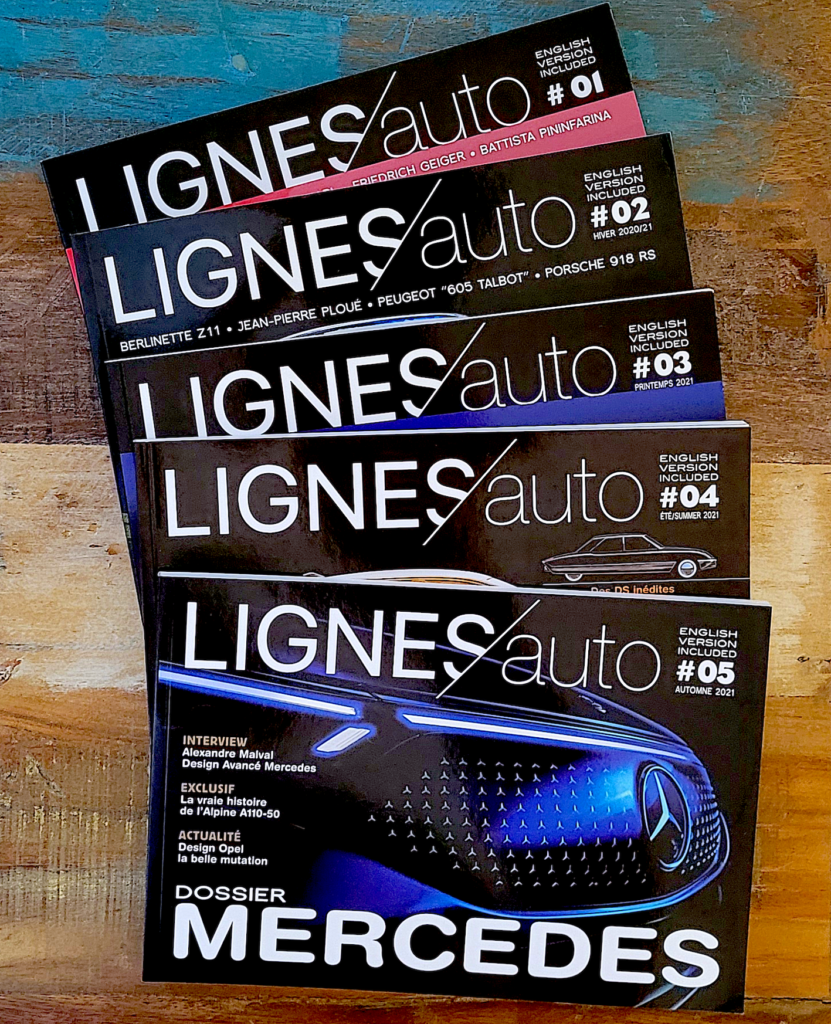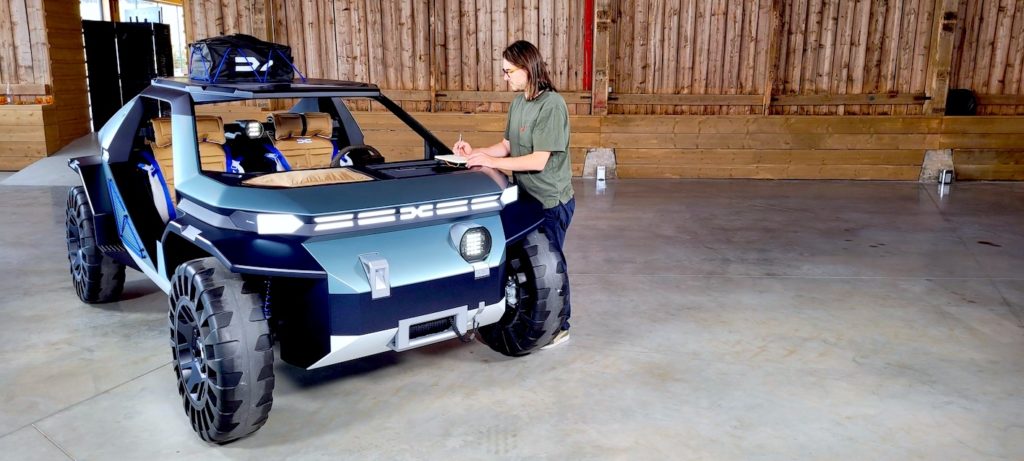
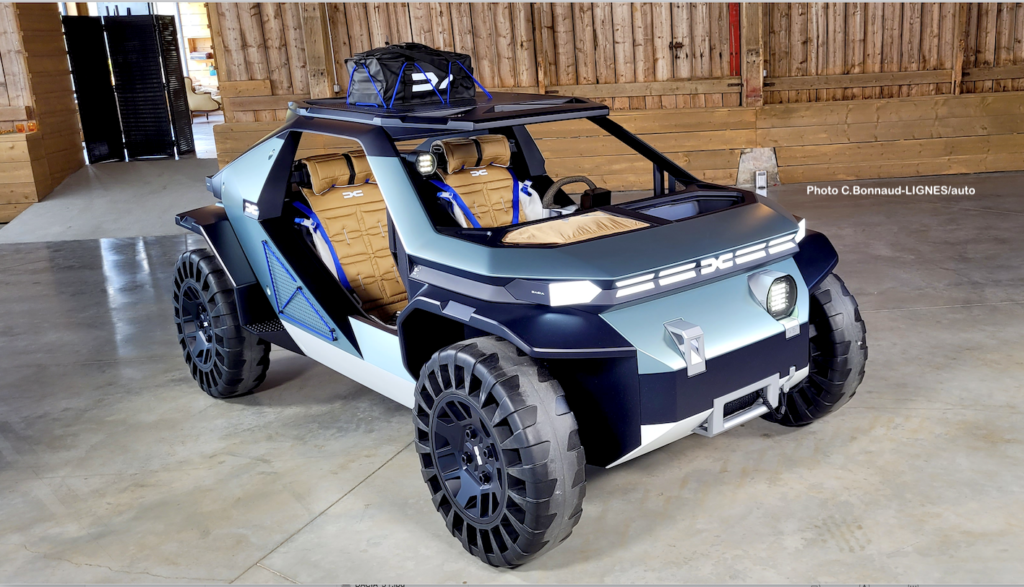
Dacia has put together a strong team of designers around David Durand, the brand’s design director. An advanced design department has even been created. It is in the hands of Romain Gauvin who accompanies us for this discovery of the Manifesto concept car. Dacia’s ambitions are legitimately growing. On the design side, let’s mention (among others) the arrival of the specialist in Colours & Trims Hélène Veilleux, who, like Romain, comes from Citroën. Let’s also add Raphaël Le Masson to the interior design team, also previously tattooed with the “double chevron”.
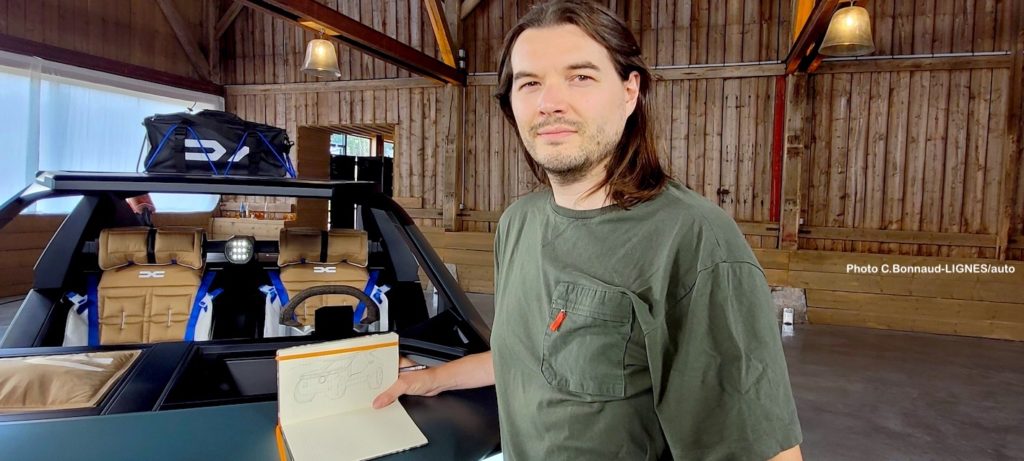
Is this a palace revolution? Let’s put it more simply: with the sales volumes achieved over the last few years, Dacia can afford to be more daring in terms of aesthetics than was previously the case. As Romain Gauvin points out, “there is an industrial logic and as Dacia represents significant volumes, it is now easier to bring in a design with aspects that require investments that are absorbed by its volumes. We now have the possibility of making strong design choices.”
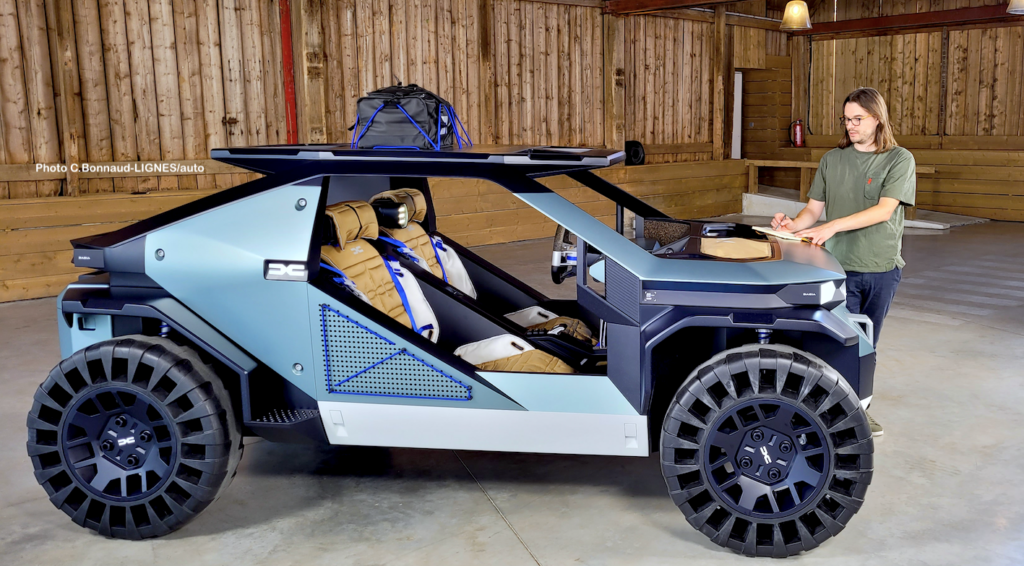
This is the first Dacia concept car since the presentation of the Duster concept – which has nothing to do with the production vehicle – in 2009. Consider the Bigster as a show car for the production version that will arrive by 2025. The name of the newcomer is Manifesto, a name that makes it clear that this vehicle will not be mass-produced because it is, according to Romain, “a laboratory of ideas and form language. There are a myriad of details that we have designed on this Manifesto that you will find on production vehicles.”

The discovery of this very airy Dacia is a total surprise! It is light years ahead of the 2004 Logan with its flat windows, simplistic embossed parts and outdated three-box silhouette, but totally in line with the specifications of the late 1990s. How could we fail to realise that, eighteen years later, Dacia is a manufacturer that now carries a lot of weight on the French, European and North African markets? Could we have imagined that one day we would have fun at the wheel of a Dacia?
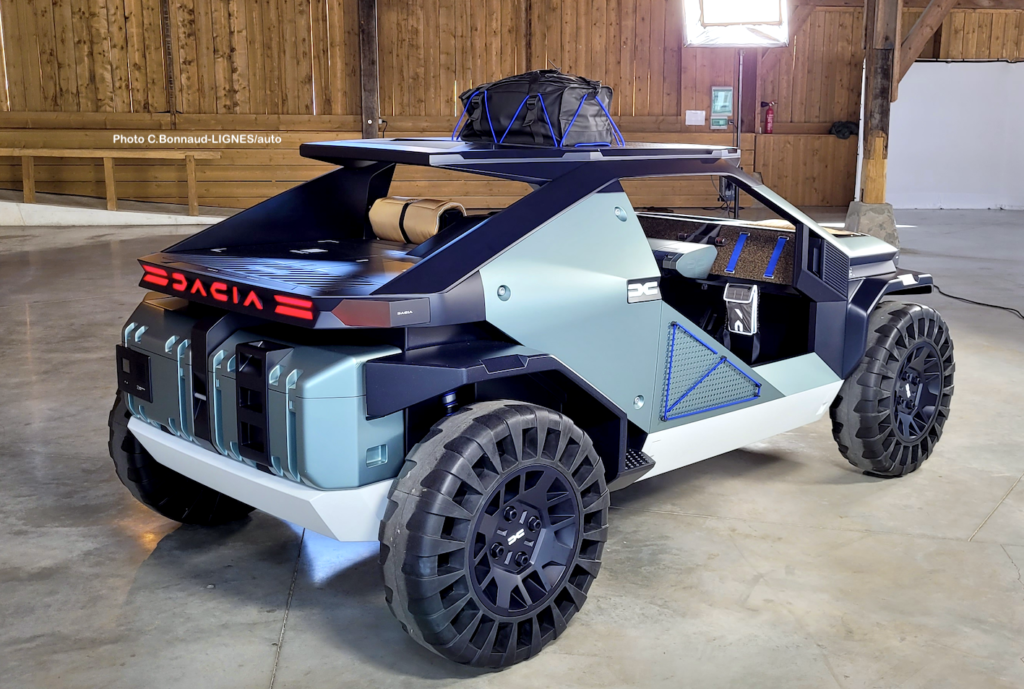
Having fun driving this Buggy? First of all, don’t compare the Manifesto to a Buggy, or you’ll be driving under the wheels of a Bigster! “No, it’s not a Buggy,” confirms Romain Gauvin. “Dacia is now known for being reliable, robust and outdoor. All our vehicles are geared towards outdoor activities. Dacia emphasizes the essential but clever side. We look for the customer’s needs as closely as possible to their expectations.”
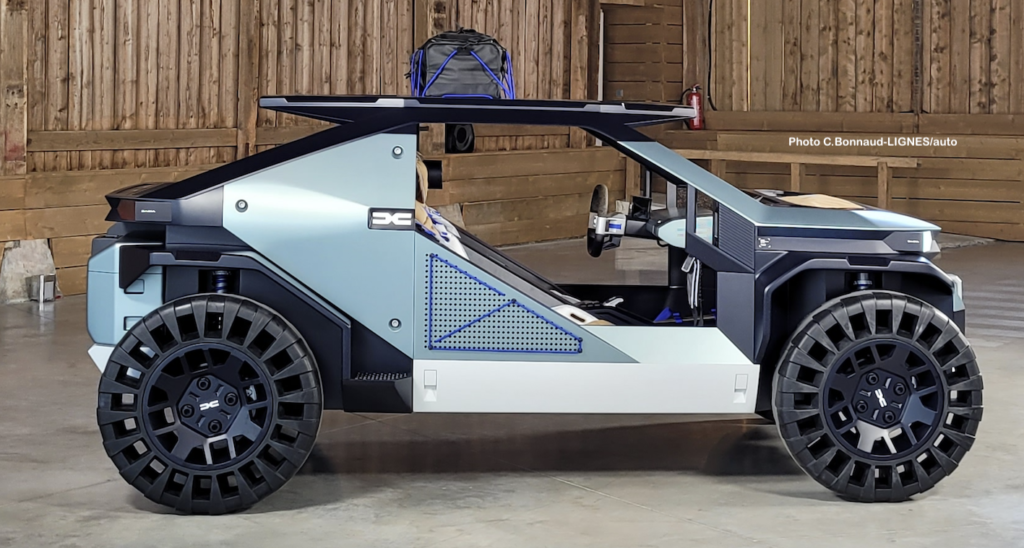
Indeed, the essential side is apparent in this totally open Manifesto, as it has no door or windscreen! “When we design cars with strong styling choices, we go for the real thing! They are then vehicles that put a smile on your face.” As you can see, we’re going to have a great time at the wheel of a Dacia! “This car is a bit like a Sherpa, it’s not at the centre of the experience or the journey, but without it, there’s no journey!”
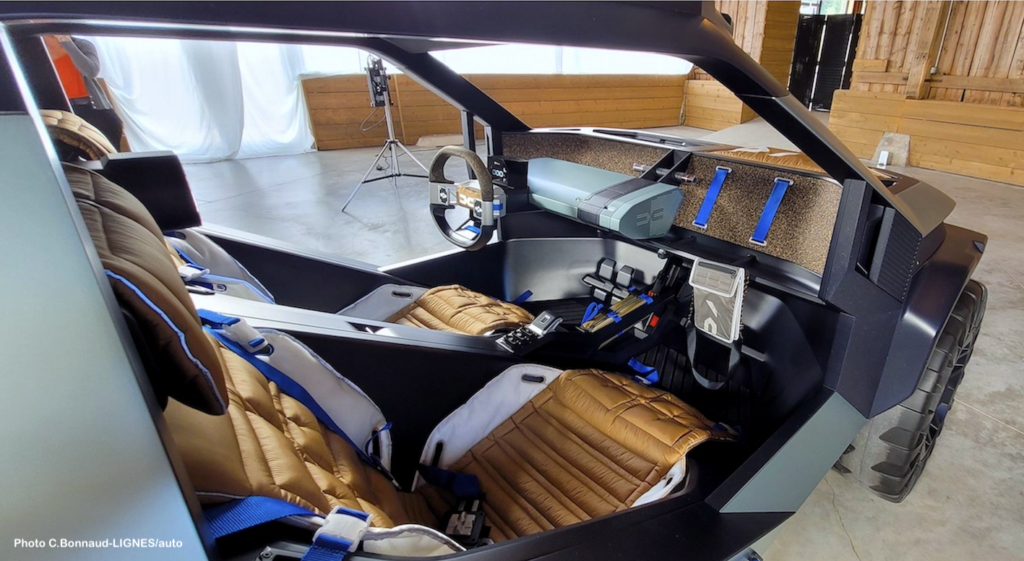
Manifesto’s outdoor credentials are evident in its cross-country focus. It incorporates the outdoor activities that Dacia customers value, such as the two seats that convert into sleeping bags. These dual-purpose ‘accessories’ are plentiful, including the unique asymmetrical bow light that is nomadic and converts into a torch, as well as the on-board lamp. At the rear of the concept, there is a battery on the left that acts as a generator to charge all sorts of equipment. On the right, the box is more dedicated to tools. At the front, the large recesses are used for accessories and can be transformed according to need or desire.
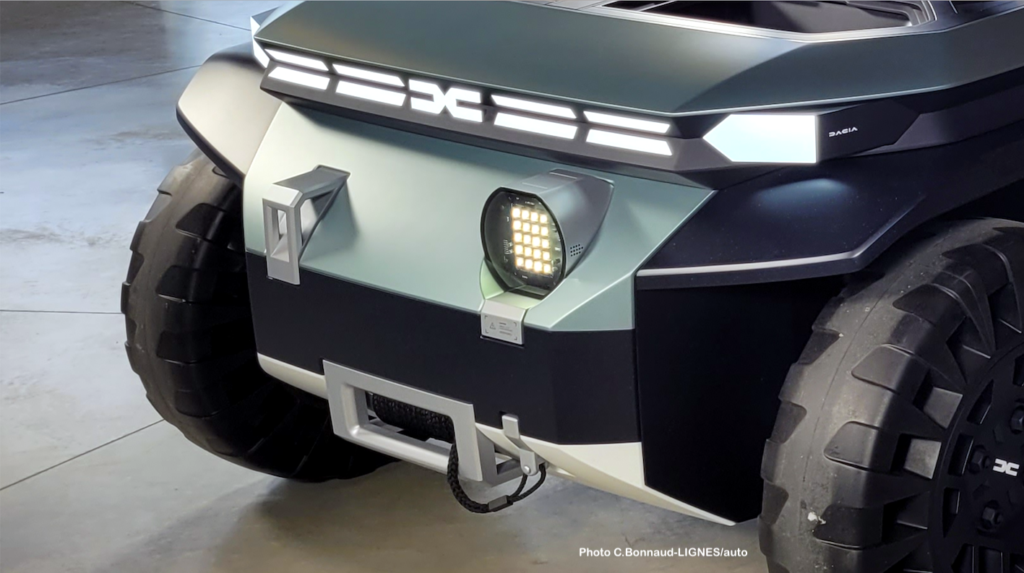
Do you think this Dacia Manifesto is 100% electric? No, that’s not the case, confirms Romain Gauvin: “It’s above all a Dacia and so it’s a vehicle that we imagine to be multi-energy. A combustion engine could be fitted at the front. We design our products according to our markets, which are not all 100% electric.”
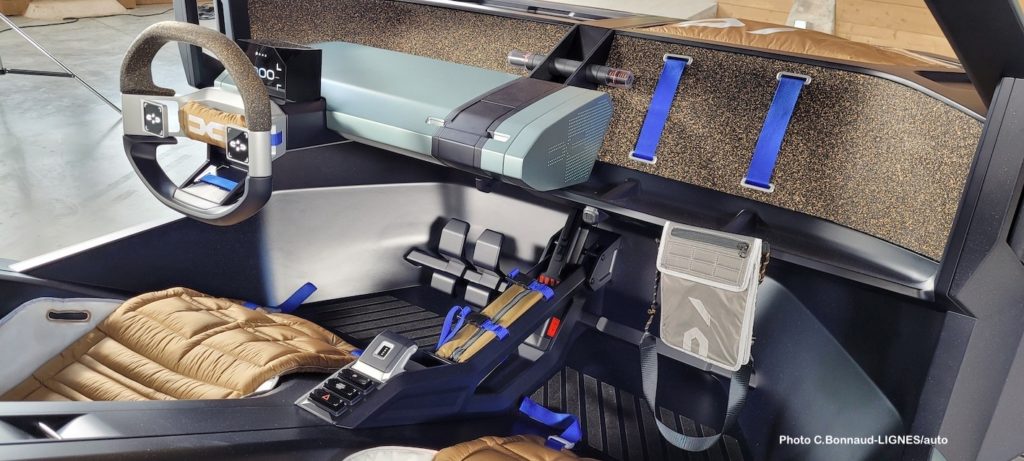
The Manifesto is a strict two-seater because it is compact: no more than 3.60 m compared to the 3.73 m of the Spring and the 4.08 m of the Sandero. Romain Gauvin explains that “we wanted this compactness because every centimetre is more weight.” Its main feature is its large airless tyres. “The large wheels are a virtue for the crossing and play on the proportions.” Their diameter is 850 mm, which is no mean feat on this small 3.60 m machine!
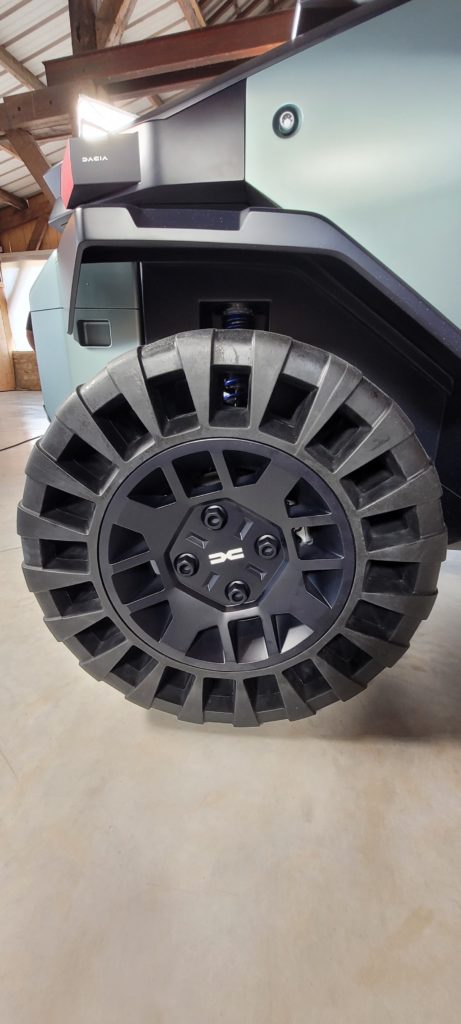
“We wanted a vehicle that would be able to cross over and from the start we worked on the proportions, the size of the wheels and the type of silhouette that we wanted before we even started on the style. Afterwards, our designers came up with some nice ideas and it’s true that we’re not on a classic design sculpture gesture.” Needless to say, the materials are recyclable and even innovative, such as the upper part of the steering wheel and the dashboard, which are made of cork mixed with recycled tyres. Practical: you can pin your photos or notes on it. Come on, grab your backpack and follow this Sherpa!
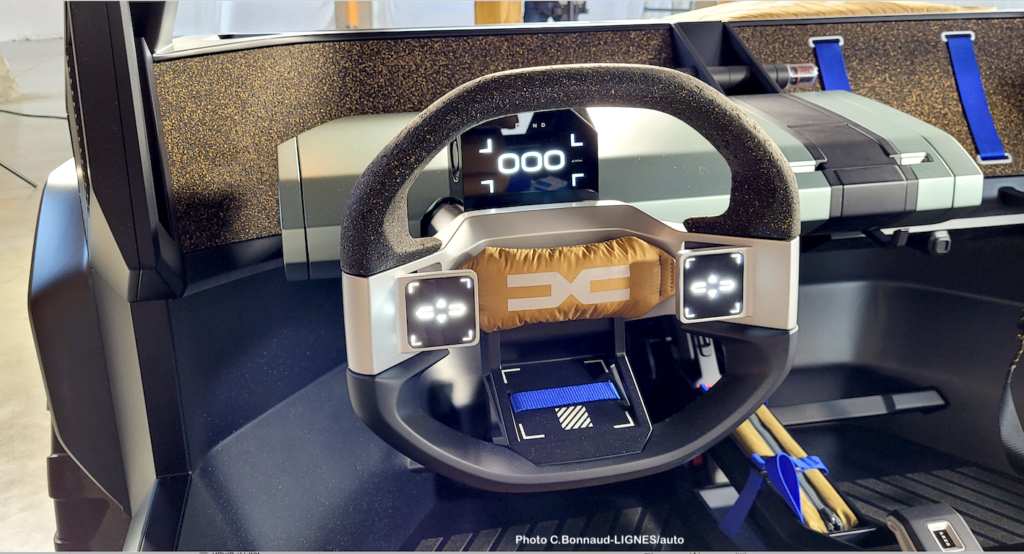
WHEN DACIA THINKS IT IS CITROËN :
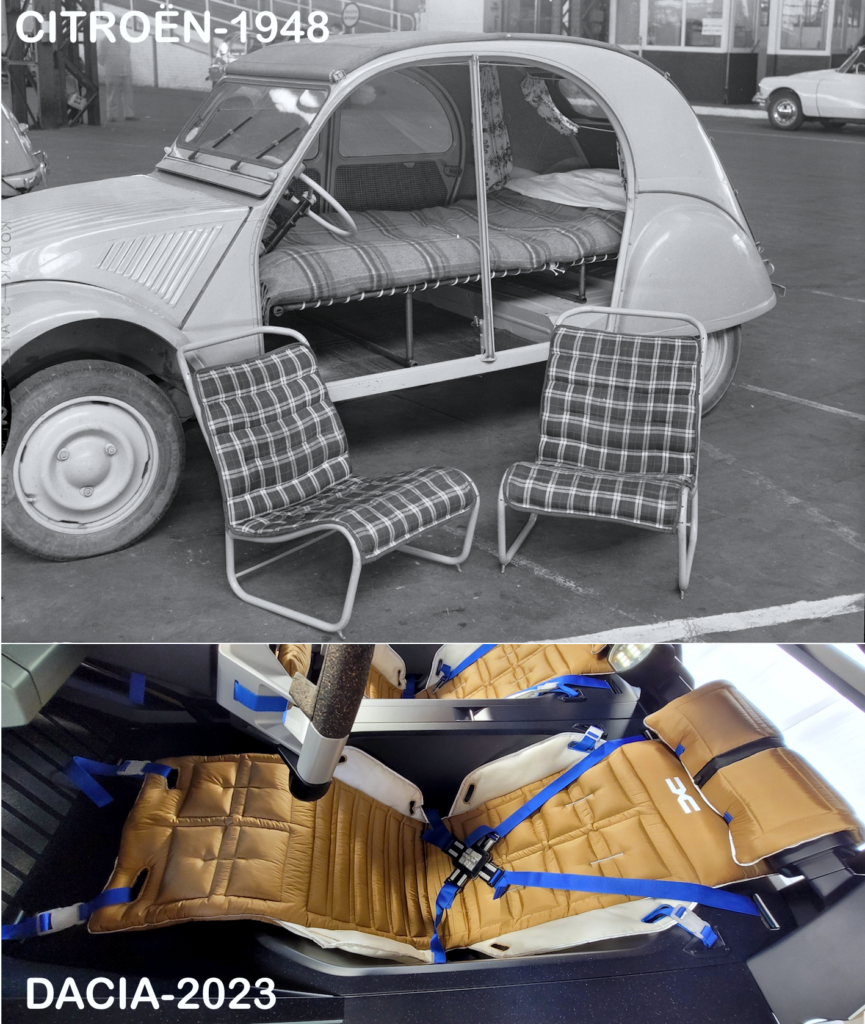
You think that Dacia doesn’t necessarily consider itself a rival to Citroën. It’s funny to go back in time to 1939 when the engineers who designed the Citroën TPV (very small car) developed a front end with a single headlight (below)
And then, in 1948, they fitted their 2CV with removable seats for resting or picnicking (above). With its “torch” headlight and seat covers that can be used as sleeping bags, Dacia reinterprets the Citroën icon in its own way!

ORDER THE BILINGUAL “LIGNES/auto” NEWS, DESIGN AND AUTOMOTIVE ARCHIVES QUARTERLY HERE : https://lignesautoeditions.fr/?p=790
